The easiest onsen tamago you’ll ever make! No lids or cold water required and ready in 15 minutes. Get ready for the creamiest, silkiest Japanese hot spring eggs ever.
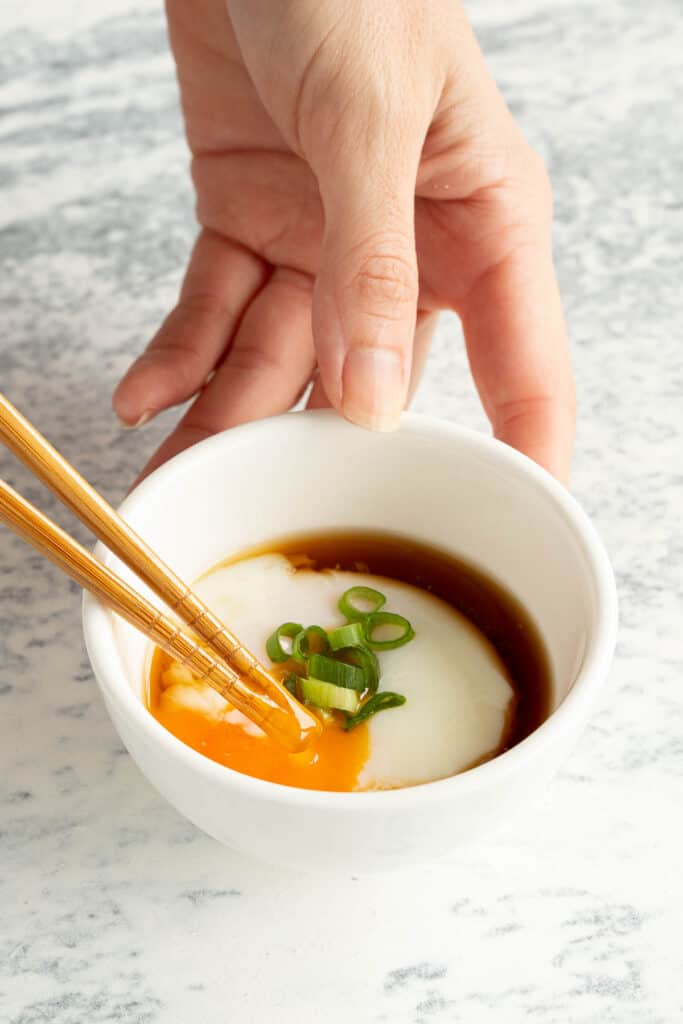
In This Post You’ll Learn
Why We Love This
The perfect way to cook onsen eggs is actually mostly hands off. The less you touch, the better. Just let the hot water work its magic. Personally, we think this is much easier than messing around with modern sous vide machines or adding cold water etc. The simpler, the better we say!
Eating slow cooked eggs this way for the first time is an experience in itself! Get ready for custardy eggs like you’ve never had before. The texture of the whites is out of this world.
Related: Ramen Eggs (Ajitsuke Tamago) / Miso Butter Scrambled Eggs
Onsen Eggs – A Subjective Taste
The biggest thing to keep in mind with this recipe is the subjectivity of taste and texture when it comes to the end result.
This recipe aims to achieve a custard like egg white texture that holds it’s shape with runny yolks. Some of you will prefer harder yolks and / or more set whites (Sarah does! But Laura loves soft boiled eggs), so just be aware you may need to adjust cooking times to suit your own situation and preferences.
Also, if you are based in a country where it is unsafe to eat raw eggs, we recommend to pasteurise raw eggs before you proceed.
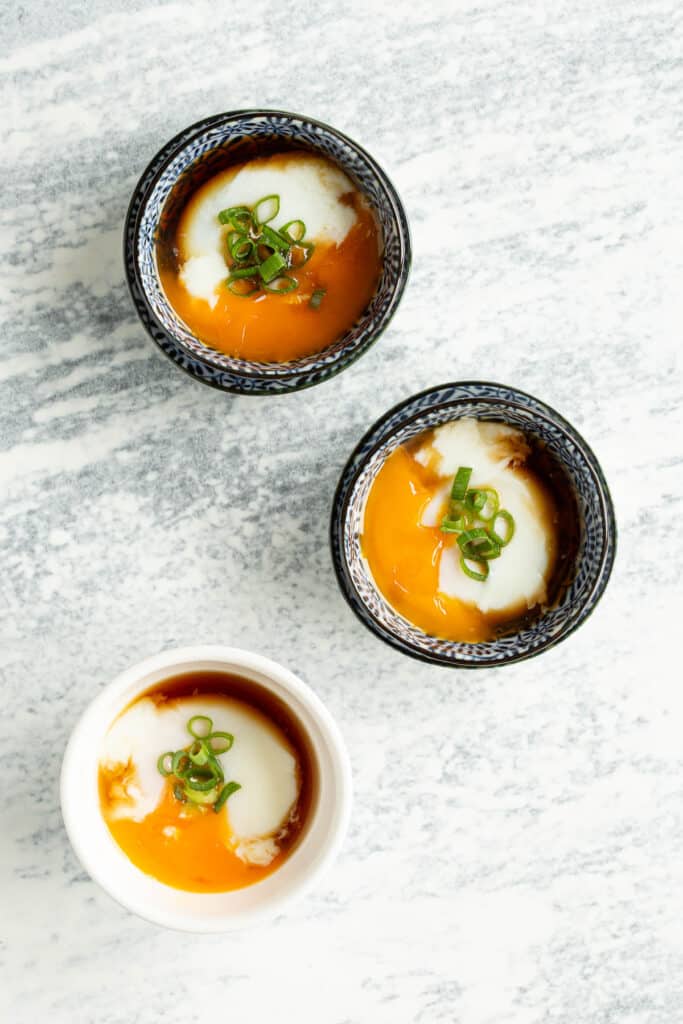
What is Onsen Tamago?
Onsen tamago (温泉卵), also known as hot springs egg, is a Japanese method of cooking cold eggs in low temperature. It first originated in Japanese onsens or hot springs, where baskets of eggs are lowered into the hot water.
Rather than cooking in boiling water, the eggs are gently lowered into water that is just below boiling point. This causes the egg whites and yolks to softly cook without setting firmly.
The eggs can be served with simple garnishes like finely chopped spring onion and mentsuyu sauce, or stirred through bowls of rice or udon noodles.
What You’ll Need
- Eggs – Use eggs straight from the refrigerator for this recipe. We use extra large eggs that weigh around 59 g / 2 oz. If your eggs are smaller or larger you will need to adjust your cooking times. We do not use room temperature eggs.
- Optional Garnish Ideas – Spring onion (green onion / scallion), mentsuyu sauce, katsuobushi (bonito flakes), furikake seasoning, or toasted sesame seeds.
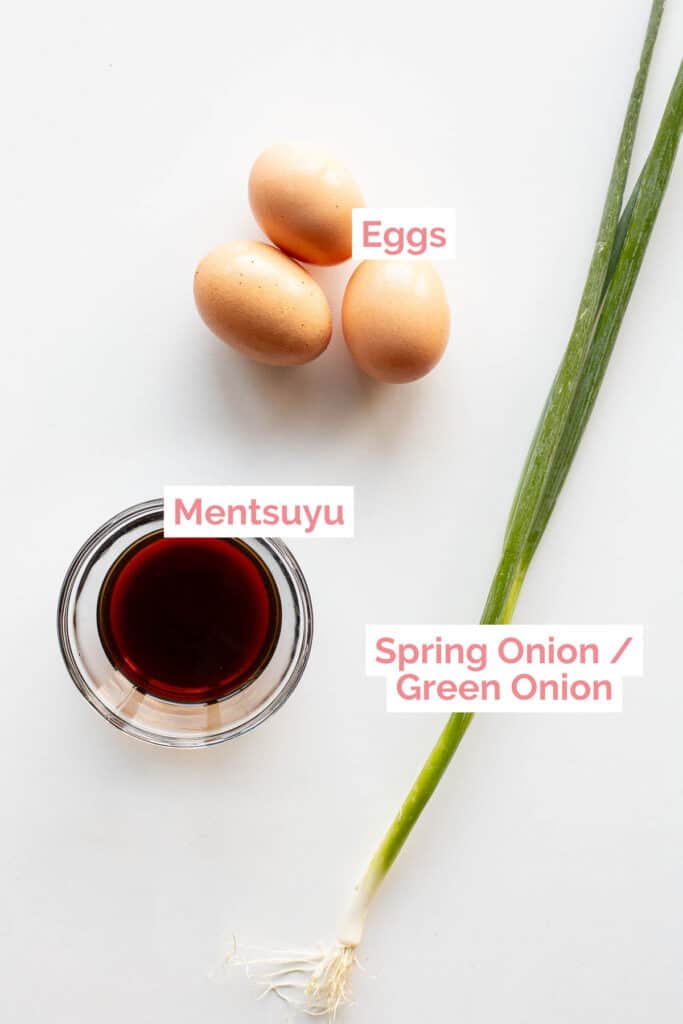
How to Make Japanese Hot Spring Eggs
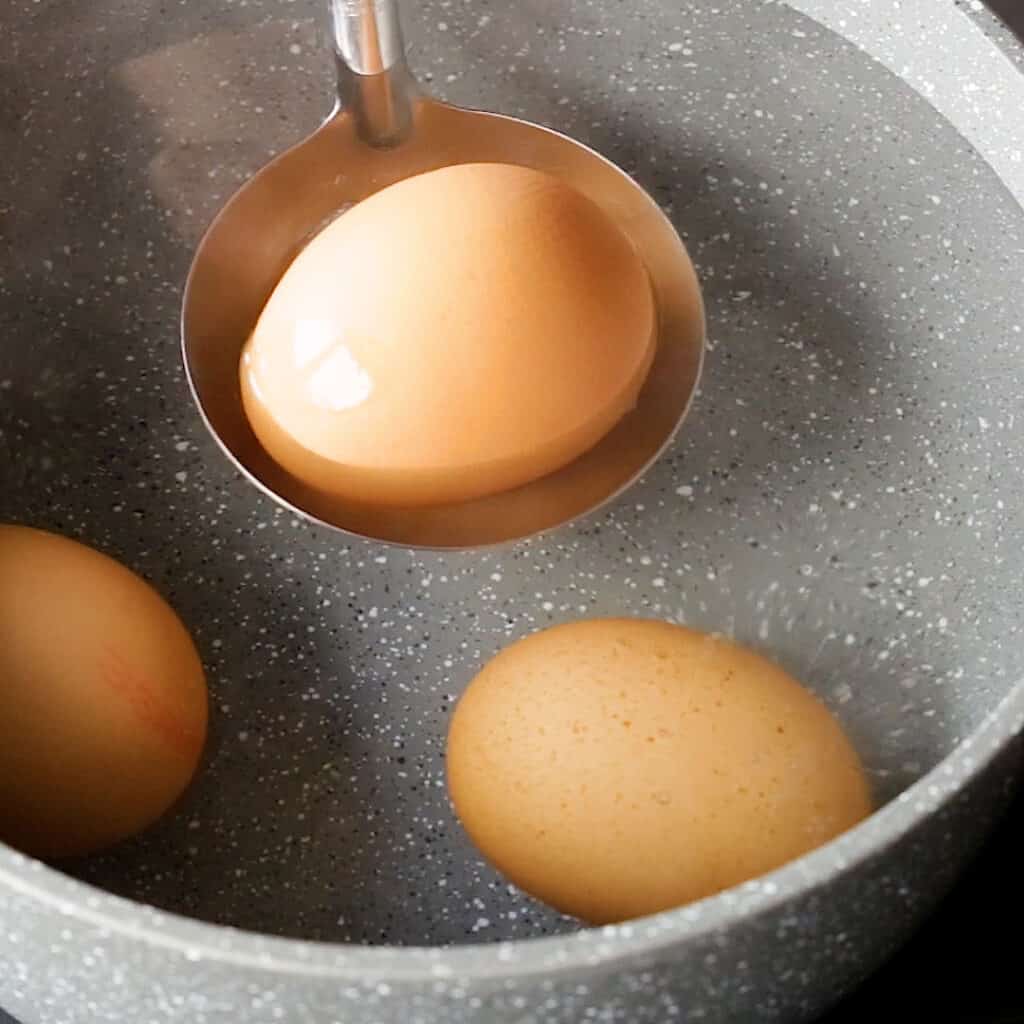
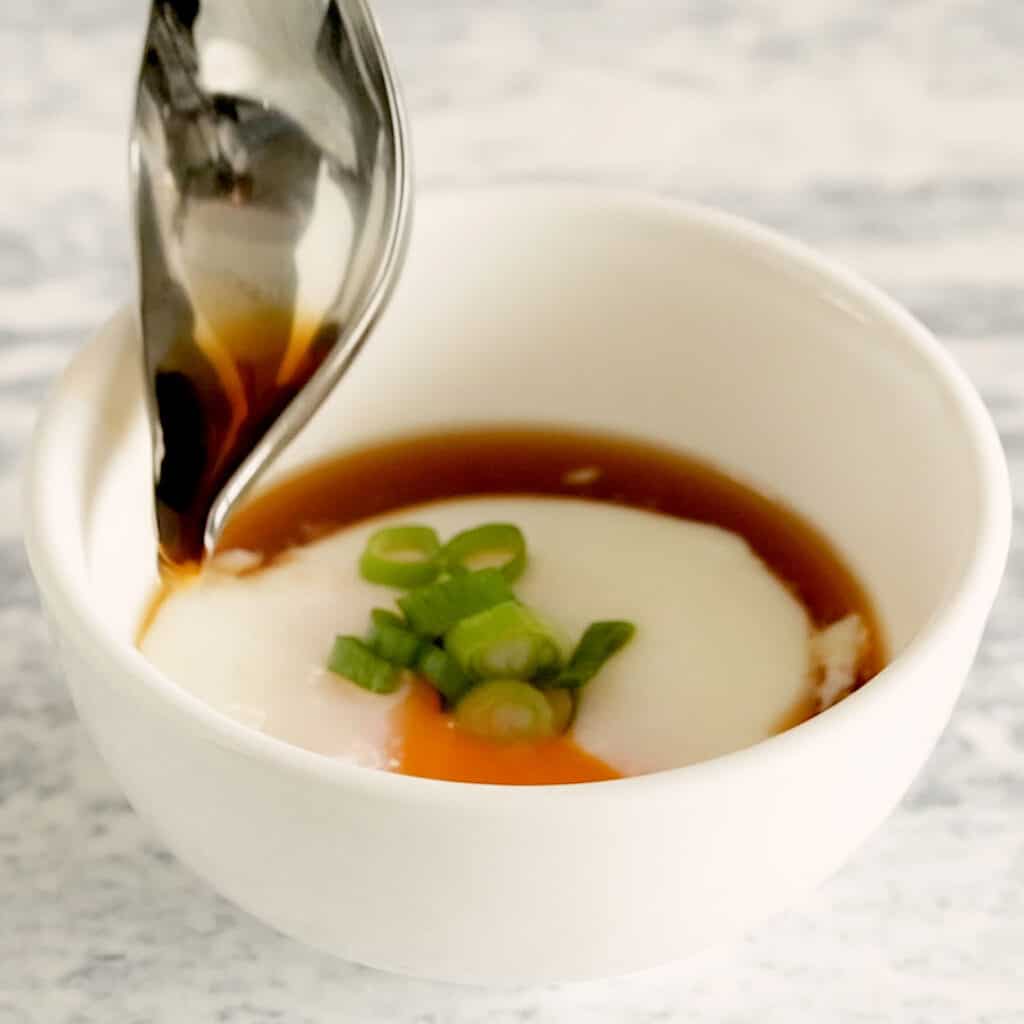
First, gather your ingredients: See recipe card below for measurements.
- Fill a small saucepan (18cm / 7 in) with water and bring to a rolling boil, then switch off the heat. Very slowly lower each egg into the pot, straight from the fridge – not room temp! Note: You can only put up to 3 eggs in each pot, otherwise it will lower the heat too much.
- Leave the eggs for 15 minutes (make sure you set a timer!) without a lid on the pot.
- Carefully remove and crack each egg shell, opening them into a small bowl. Pour a tablespoon of mentsuyu around the edge of the egg, and finish with a garnish of spring onion / green onion. Alternatively, crack on top of a dish such as udon or ramen.
Wandercook’s Tips
- Cooking Pan – The pan size and water temperature can affect the cooking time of the eggs. We used an 18 cm / 7 inch saucepan for this recipe.
- Storage – Once cracked, it’s best to serve immediately, however uncracked onsen eggs can be stored in the fridge for 1-2 days.
- Filtered Water – Using filtered water to cook the eggs can give you more consistent results than regular tap water.
FAQs
If you ended up with regular boiled eggs, you probably left them in the hot water too long, causing them to be overcooked for the purposes of this recipe. Variation in saucepan sizes can also affect cooking time, so you may need to adjust your timing and take them out earlier next time, but they’re otherwise still very edible!
If your eggs were still raw at the end, you might need to cook them longer OR keep the cooking time the same and pop the lid on next time. Don’t throw them away though, just fry them up and enjoy them as scrambled eggs.
Don’t be afraid to experiment, it may take a few tries to get right.
While you’ll usually see these on top of traditional Japanese dishes like gyudon (beef rice bowls), we love adding these eggs on top of a range of dishes, across different cuisines too. Try it on some of these:
Rice Dishes – Plain sushi rice, Japanese Katsu Curry, Zosui, Indonesian Nasi Goreng, Bibimbap and Vietnamese Congee.
Noodle Dishes – Yakisoba, Yaki Udon, Mapo Tofu Udon Noodles, Mee Goreng, Tantanmen Ramen, Gochujang Pasta and Curry Udon are all good options.
Ajitama ramen eggs are cooked in boiling water for 7 minutes to cook the whites until hard, then transferred to ice cold water to stop the cooking process and keep the yolks nice and jammy. They’re then marinated in a soy sauce mix.
Onsen tamago on the other hand is cooked in water that is off the boil. So both the whites and yolks come out silky and custard like.
Both eggs are considered soft cooked or soft boiled.
Variations
- No Mentsuyu? – Mix 1 tbsp of soy sauce with ¼ cup dashi broth (hondashi is our favourite) and 1 tsp of mirin (or ½ tsp of sugar).
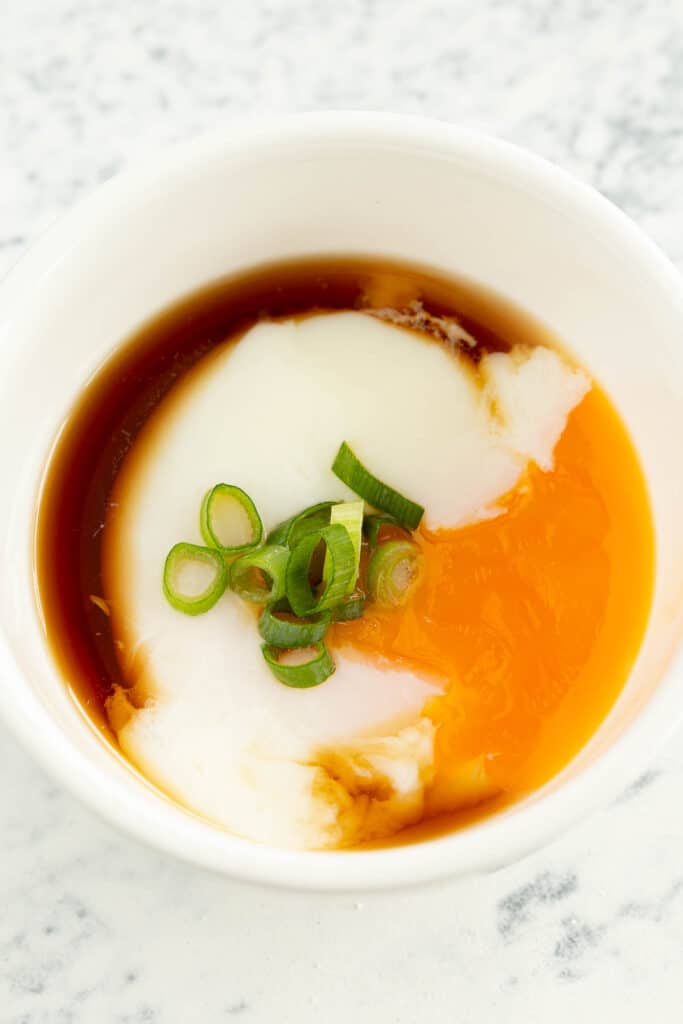
Try these amazing recipes next:
★ Did you make this recipe? Please leave a comment and a star rating below!
Equipment
Ingredients
- 2 eggs
- water enough to cover eggs
- 1 tbsp mentsuyu see Notes below for sub.
- spring onion / green onion
Instructions
- Fill a small saucepan (18cm / 7 in) with water and bring to a rolling boil, then switch off the heat.water
- Very slowly lower each egg into the pot, straight from the fridge – not room temp! Note: You can only put up to 3 eggs in each pot, otherwise it will lower the heat too much.2 eggs
- Leave the eggs for 15 minutes (make sure you set a timer!) without a lid on the pot.
- Carefully remove and crack each egg shell, opening them into a small bowl. Pour a tablespoon of mentsuyu around the edge of the egg, and finish with a garnish of spring onion / green onion. Alternatively, crack on top of a dish such as udon or ramen.spring onion / green onion, 1 tbsp mentsuyu
Video
Recipe Notes
- No Mentsuyu? – Mix 1 tbsp of soy sauce with ¼ cup dashi broth (hondashi is our favourite) and 1 tsp of mirin (or ½ tsp of sugar).
- Cooking Pan – The pan size and water temperature can affect the cooking time of the eggs. We used an 18 cm / 7 inch saucepan for this recipe.
- Storage – Once cracked, it’s best to serve immediately, however uncracked onsen eggs can be stored in the fridge for 1-2 days.
- Filtered Water – Using filtered water to cook the eggs can give you more consistent results than regular tap water.
Nutrition
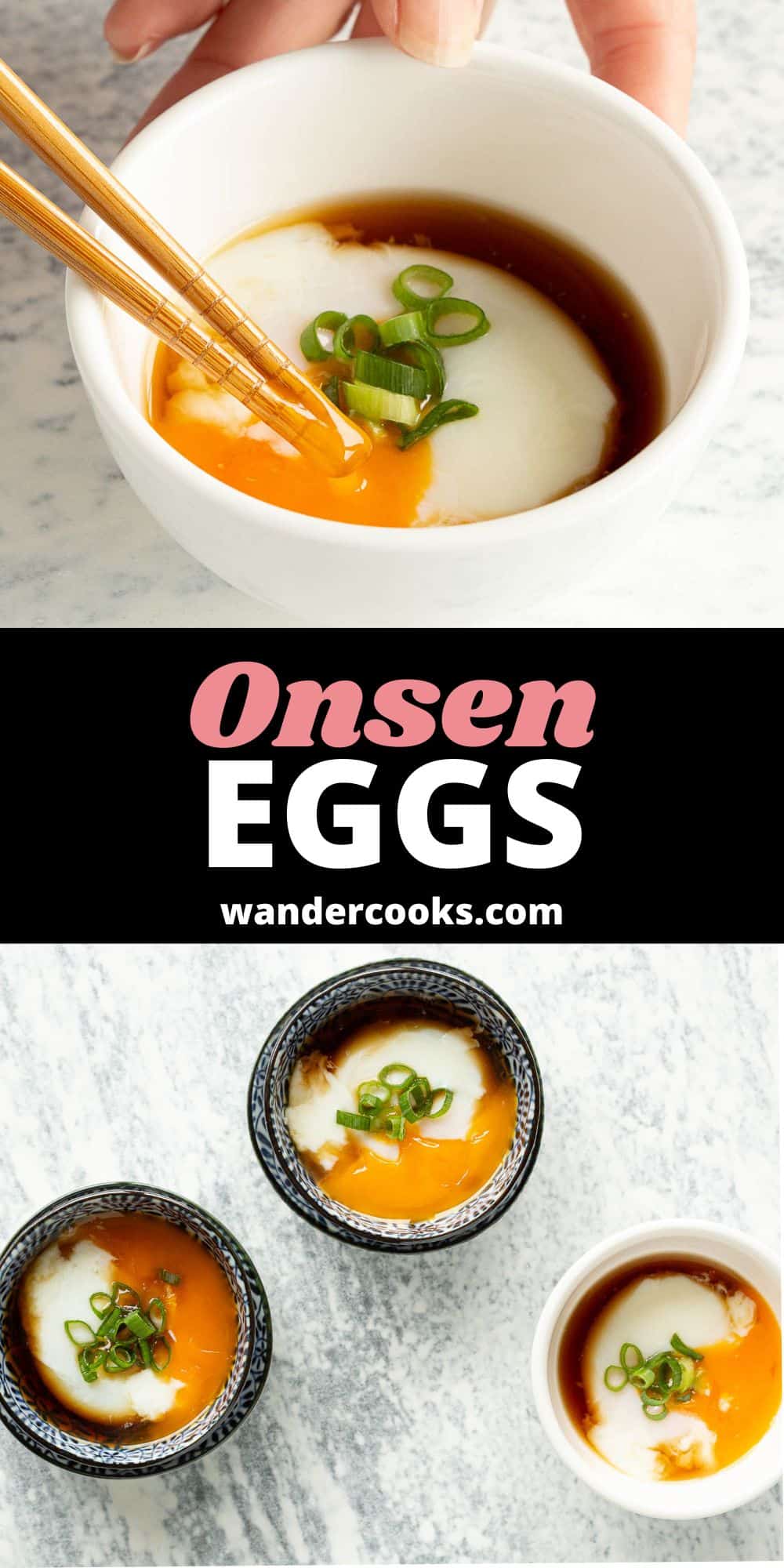

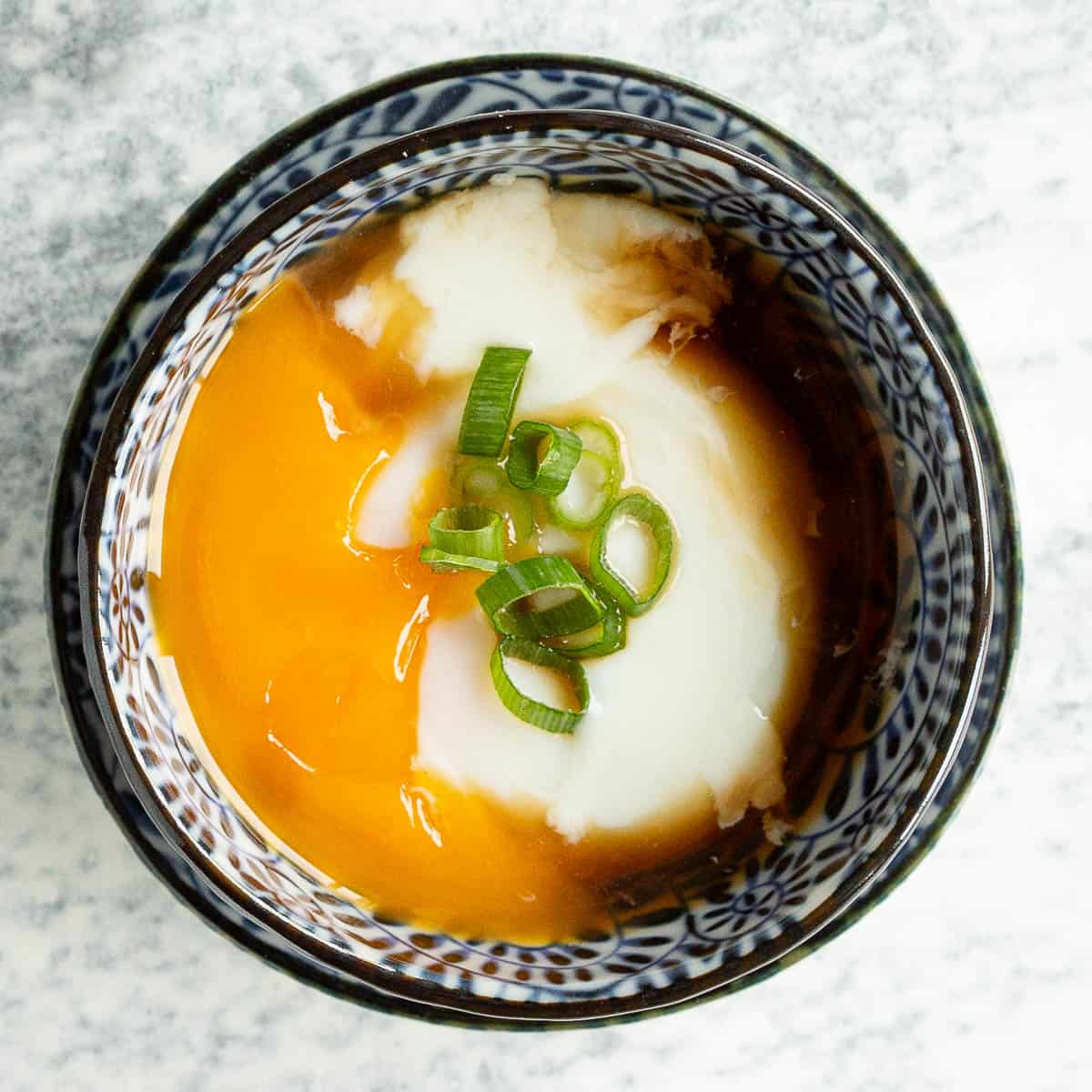



No Comments